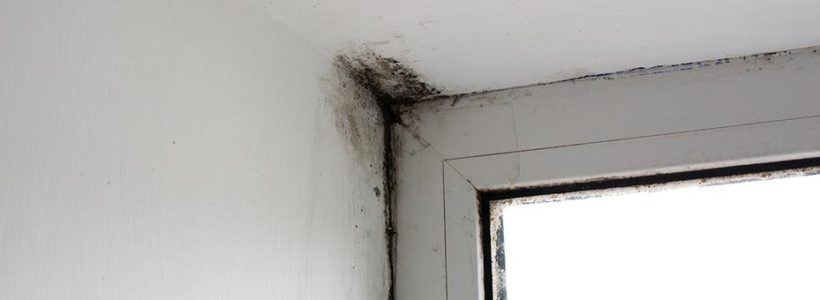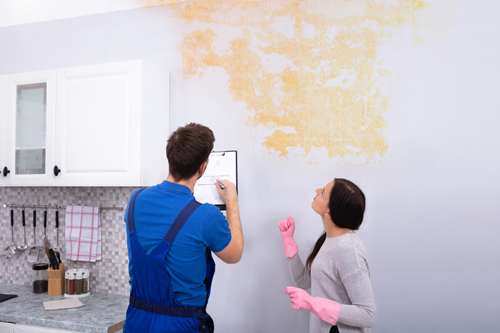What're your insights and beliefs on Indicators of Water Damage Behind Walls?

Water discolorations on wall surfaces are not pleasurable to the eyes. Sometimes it seems virtually unpreventable to experience water stains on wall surfaces in houses.
Home owners residing in humid regions frequently take care of the worry of water discolorations on wall surfaces. That doesn't have to be the situation for you. With accurate and well-shaped details on the reasons for water stains and punctual repair work procedures, you will always be an action ahead of such events. So, this post guarantees to be a practical overview for you.
3 Common Sources Of Water Discolorations on Wall Surfaces
As opposed to common belief, water discolorations on wall surfaces do not constantly come from poor structure materials. There are numerous reasons for water discolorations on wall surfaces. These consist of:
Damp
When warm wet air meets completely dry cold air, it creates water beads to base on the wall surfaces of structures. When there is heavy steam from food preparation or showers, this takes place in cooking areas and also shower rooms. The water beads can discolor the surrounding walls in these parts of your residence and spread to other areas.
Wet or condensation impacts the roofing system as well as walls of structures. This causes them to show up darker than other areas of the house. When the wall surface is wet, it produces a suitable setting for the development of fungi as well as microorganisms. These may have damaging results on wellness, such as allergic reactions as well as respiratory system problems.
Poor Water drainage
This will avoid water from leaking right into the wall surfaces. This web links to extreme moisture that you see on the wall surfaces of your building.
So, the leading reason for damp wall surfaces, in this case, can be a poor drainage system. It can likewise result from bad administration of sewer pipes that go through the structure.
Pipe Leaks
The majority of homes have a network of water pipes within the walls. This makes certain that the pipelines are faraway from the reach of devastating rats. It constantly enhances the stability of such pipelines, as there is little oxygen within the wall surfaces. This dissuades corrosion.
A drawback to this is that water leak affects the wall surfaces of the structure and also triggers prevalent damages. A telltale sign of malfunctioning pipes is the look of a water stain on the wall.
Pro Idea
A houseplant in your house additionally enhances its humidity. So, if your home is already humid, you may want to introduce houseplants with minimal transpiration. An example of suitable houseplants is succulents.
Water Stains on Wall: Repair Work Tips
When dealing with water spots, house owners would normally desire a fast fix. Yet, they would quickly realize this is counterproductive as the water discolorations persist. Here are a few handy suggestions that will certainly guide you in the repair service of water discolorations on walls:
- Always fix the root cause of water discolorations on walls
- Involve the aid of specialist fixing solutions
- Technique routine cleanliness as well as clean stopped up sewage systems
- When building a home in a waterlogged location, make sure that the workers perform appropriate grading
- Tiling locations that are prone to high condensation, such as the bathroom and kitchen, assists in decreasing the accumulation of moist
- Dehumidifiers are additionally valuable in keeping the wetness levels at bay
Conclusion
Although no one intends to have water spots on walls in their house, it can occur to the best people. This short article offers you leverage, as you currently understand how to manage this mishap if it does take place.
It is constantly best to hire professional services to assist take care of the damages in your house.
In some cases it appears practically inescapable to experience water spots on walls in homes.
In contrast to popular idea, water stains on walls do not constantly stem from inadequate structure products. There are several reasons of water stains on wall surfaces. The water beads can discolor the bordering wall surfaces in these parts of your home and spread to other areas.
Right here are a couple of handy pointers that will guide you in the repair service of water discolorations on walls:
How to Fix Water Stains On Walls
Water stains on walls aren’t something anyone enjoys to look at in their home. It might seem like an easy option to just paint over the stain, but it will take more than that. It’s very important to determine if there is an ongoing problem causing the stain, and fixing that before you go any further. If you don’t follow the steps, you could have more problems down the line.
Solve the Underlying Issue
Water stains on walls are a big sign of water damage. Seeing this is your signal to find out where the water could be coming from. Most likely this is due to a leak somewhere in your plumbing, but there could be other causes. These problems can be from somewhere outside your home as well. If you can’t determine where the leak is coming from, call your local plumber to find the leak and repair it.
Here are some common reasons water damage can occur:
- Plumbing failures
- Construction failures
- Natural events
- Appliance failures
Dry the Area
Once you’ve fixed the underlying problem, you need to make sure the area is completely dry. You can do this using dehumidifiers and fans. Place the dehumidifier on the highest setting in between two fans. Depending on how large the stain is, it can take hours to completely dry. Even if the wall only feels a little damp, it’s still important to fully complete the drying process. If you’re in count, go ahead and allow the fans and dehumidifier to run overnight.
Remove Loose Material
Water stains on walls may be covering more damage than what you can see. Use a painter’s knife or a putty knife to scrape away at any loose paint or material from the wall. If the damage is minor, you will just be scraping away at the layers of paint. If the damage is more prominent, you may need to scrape away deeper into the wall to remove all the damaged material.
Clean the Area With Bleach
Once you’ve removed all the damaged material and the water stains from the walls, use a bleach mixture to sanitize the area. If it’s not sanitized, it can lead to mold. Carefully wipe down the area to avoid letting bleach drip onto your floors or furniture. Make sure when you are cleaning the area to get into every crevice to ensure mold will not be able to grow. After you have done this, allow it to air dry completely before moving to the next step.
Repair the Wall if Needed
Now that the area is cleaned, it’s time to repair the wall. If you had to scrape away at more than just the paint on the wall, you will need to use drywall mud to fill in any cracks, dents, or crevices. Use your painter’s knife to smooth it over and let it dry. Use some sandpaper to sand it down to make it even with the wall. If you need to do a few layers, that’s completely fine. Just make sure to allow it to dry between each layer.
https://www.1tomplumber.com/how-to-fix-water-stains-on-walls/

I was introduced to that editorial about from an acquaintance on a different web property. Appreciated our piece? Please share it. Let another person check it out. Thanks for your time. Kindly come by our blog back soon.
Get sorted, call!
Comments on “Discovering and Solving Water Stains on Walls”